Music Vocabulary
1/43
Earn XP
Description and Tags
Name | Mastery | Learn | Test | Matching | Spaced |
|---|
No study sessions yet.
44 Terms
Accidental
An alteration of a given pitch that’s not located in the key signature. These include #, ♭, and ♮ written before the notes.
Adagio
A slow tempo, typically between 55-76 BPM.
Allegro
A quick, cheerful temp typically between 120-156 BPM.
Allegretto
A tempo that’s lightly slower than allegro, but faster than adante. Typically ranges between 98-109 BPM.
Adante
A walking temp typically between 73-77 BPM
Adantino
A temp that’s lightly faster than adante, but some composers use it to mean slower than adante. Typically ranges between 76-108 BPM.
Appoggiatura
An ornamental note mainly used in the Classical Period of long or short duration that temporarily displaces, and subsequently resolves into, a main note, usually by stepwise motion.
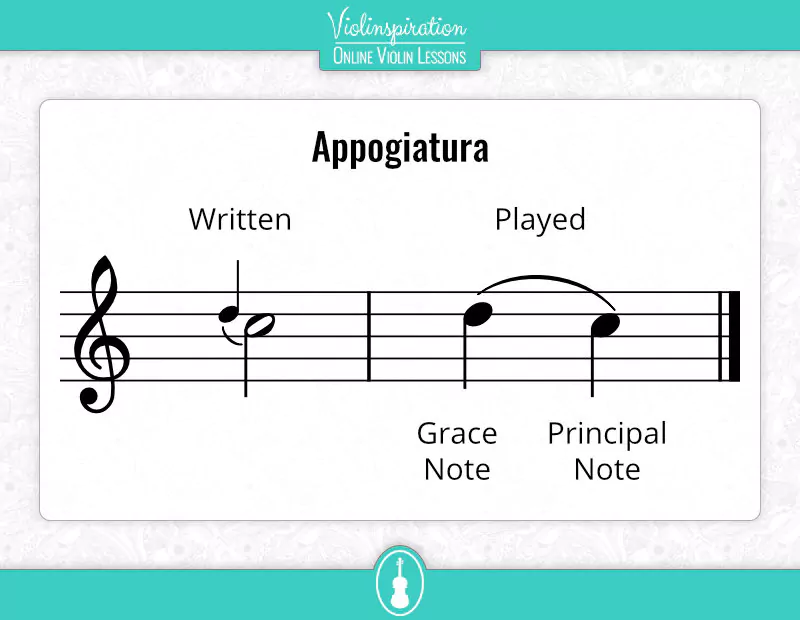
Arpeggio
A broken chord (when the notes of a chord are performed one after the other instead of all at the same time).
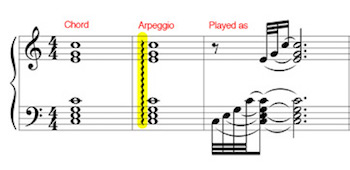
Articulation
The various ways notes are executed which include, but are not limited to, legato, staccato, marcato, slurs, trills, mordents, accents, sforzando, tenuto, and fermatas. Composers provide these in the form of written notation, usually symbols placed above or below notes.
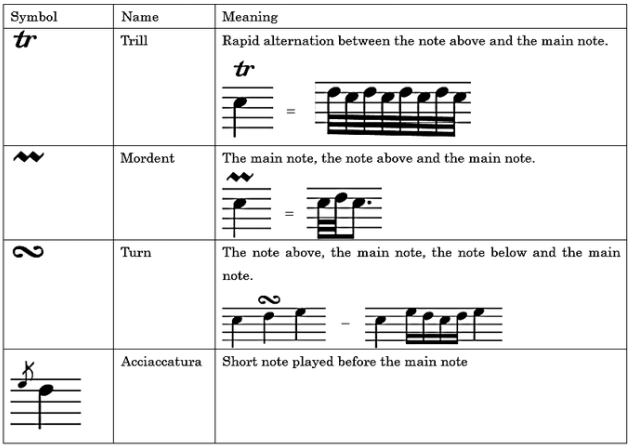
Cantabile
In a singing style, or to mimic the human voice.
Con Brio
A marking used to indicate that a musical piece should be performed with vigor or spirit.
Con Moto
A marking used to indicate that a musical piece should be performed with motion.
Damper Pedal (Leo *)
Hold the right pedal (aka the sustain pedal) down which lifts the damper inside the piano. This causes all strings in the piano to vibrate freely whenever a note is pressed, which allows them to still play well after the finger has left the key.
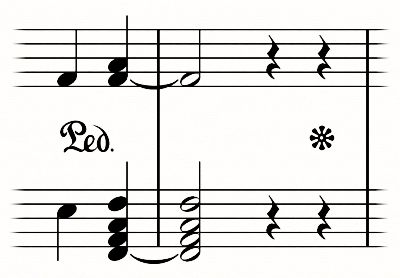
Dolce
To perform the indicated passage sweetly, softly, or with tender emotion.
Doloroso
A marking used to indicate that a musical piece should be performed sorrowfully.
Dynamics
Letters or symbols which indicate how loudly or softly the music should be played.
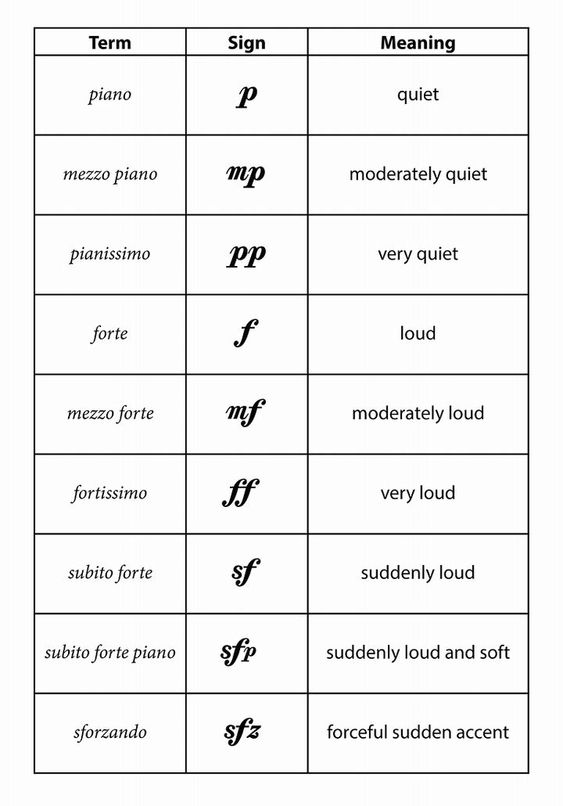
Enharmonic
Two different names for the same note, such as C# and D♭.
Forte-Piano
Forte immediately followed by piano.
Fermata
Hold the note longer than its value. Although there are no pre-defined rules for how much longer they should take, double the time is common.
Largo
A marking used to indicate that a musical piece should be performed at a very slow tempo with a sense of expansiveness.
Leggiero
A marking used to indicate the musician should play the relevant section with a light, delicate and graceful touch typically in relation to swift passages.
Lento
A tempo marking that instructs performers to execute a passage at a deliberate and leisurely pace.
Moderato
A tempo marking used to indicate that the music should be performed at a moderate pace, usually between 108-120 BPM.
Molto
An expression often used to modify tempo markings in a composition. For example, the term allegro molto would mean that the indicated passage would be performed a very fast tempo, faster than allegro.
Mordent
An ornament indicating that the note is to be played with a single rapid alternation with the note above or below.
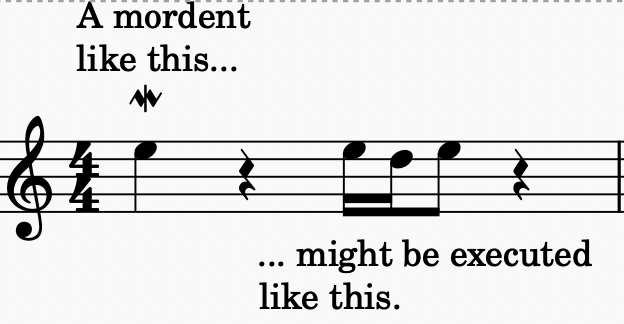
Octave Sign (8va and 8vb)
A sign used to indicate that a note, section, phrase or part of the music is to be played one octave higher than written (8va) or one octave lower than written (8vb).
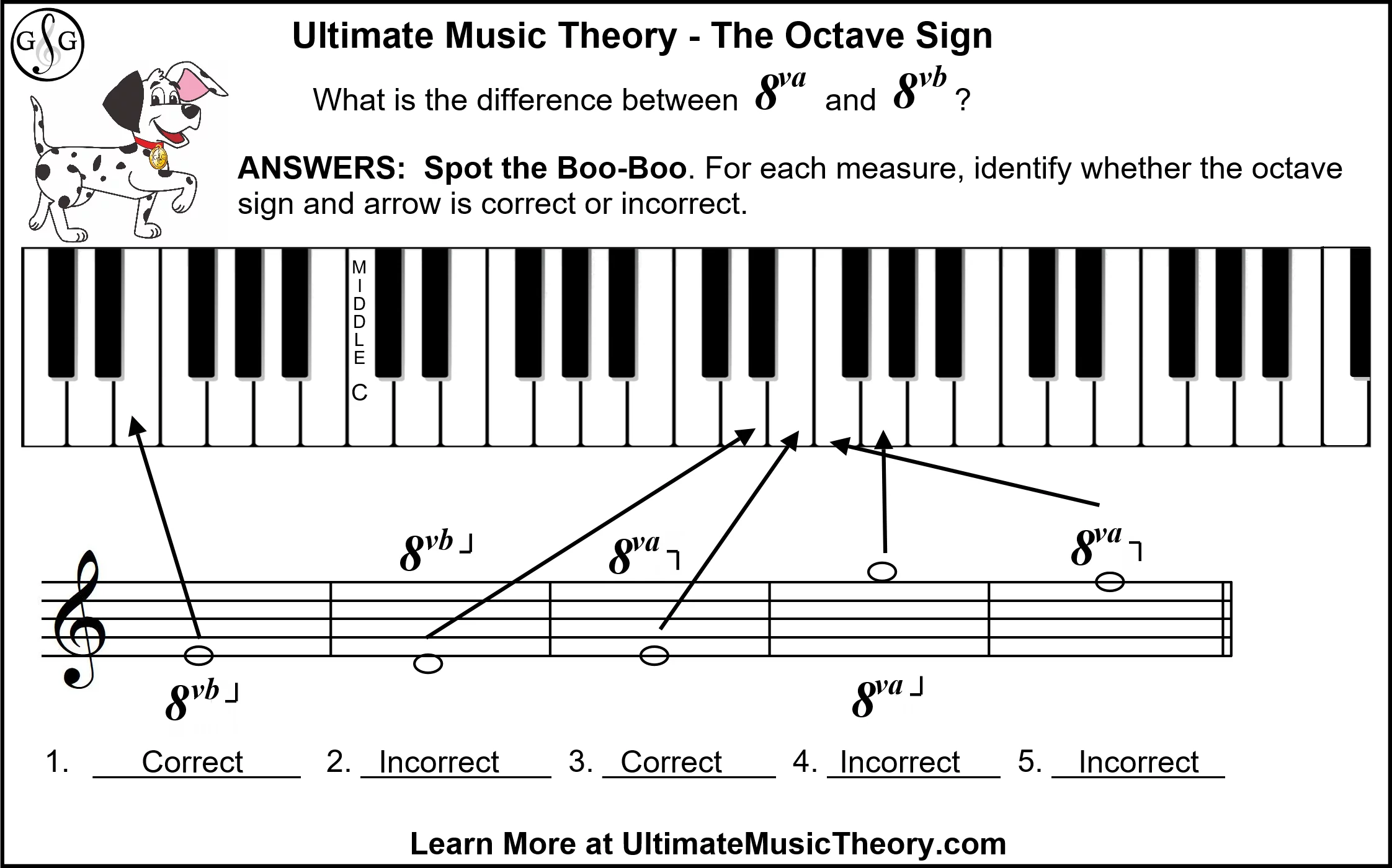
Opus
It is derived from the Latin word to mean “work" or "labor". Each composition or significant piece of music by a composer is assigned an opus number, which serves as a way to identify and catalog their works.
Ostinato
A short melodic phrase repeated throughout a composition, sometimes slightly varied or transposed to a different pitch.

Parellel Major and Minor
Major and Minor Keys with the same letter names, such as C Major and c minor.
Relative Major and Minor
Major and Minor Keys with the same key signature, but a different tonic, such as C Major and a minor.
Phrase
A musical sentance that’s usually four measures long.
Presto
An extremely quick tempo between 168–177 BPM.
Poco
An Italian adverb that translates to "little" or "slightly". It's commonly used in music as a modifier to indicate a small or gradual change in various musical elements.
Rallentando
A musical direction to play a passage slower.
Scherzando
An instruction used to guide performers to play with a playful or light-hearted quality, evoking a sense of humor and cheerful spirit.
Simile
This is an indication for the performer to play a specific section or group of bars “in a similar way" to previous passages.
Subito
Composers will use this to indicate a very sudden dynamic change by placing it in front of the dynamics.
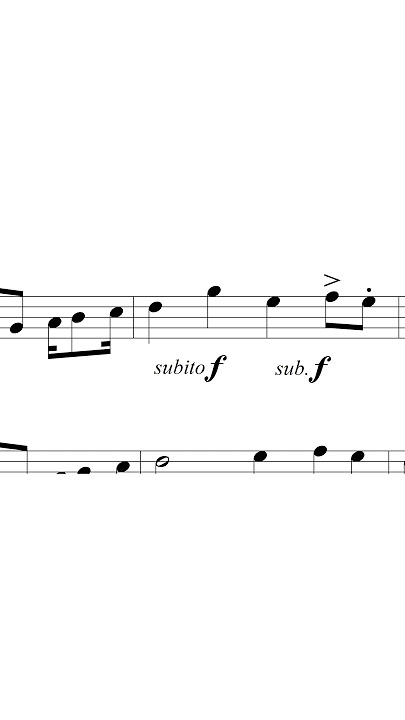
Syncopation
Tenuto
A direction for the performer to hold or sustain a note for its full length. It can also mean to place more emphasis on the note.
Una Corda (u.c.)
A musical notation used to indicate that the soft pedal should be pressed.
Tre Corda (t.c.)
A musical notation used to indicate the release of the soft pedal.
Turn
A musical ornament in which the performer plays the notes directly higher and lower than the written note.
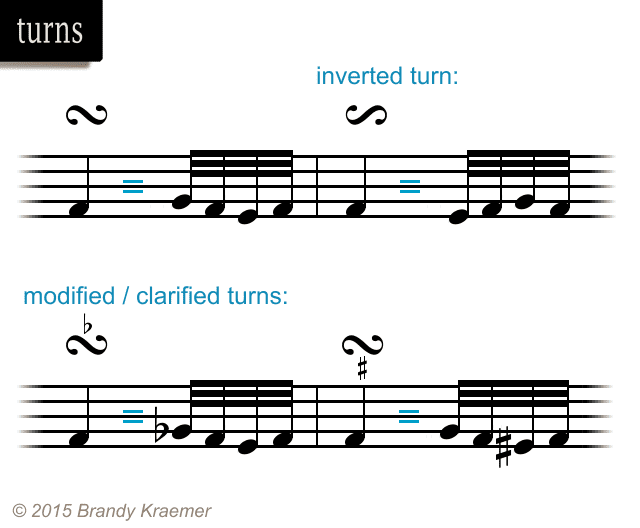
Vivace
A fast, lively tempo that usually falls in the range of 132-140 BPM.
Vivo
It is derived from the Latin word to mean “brisk" or "lively".